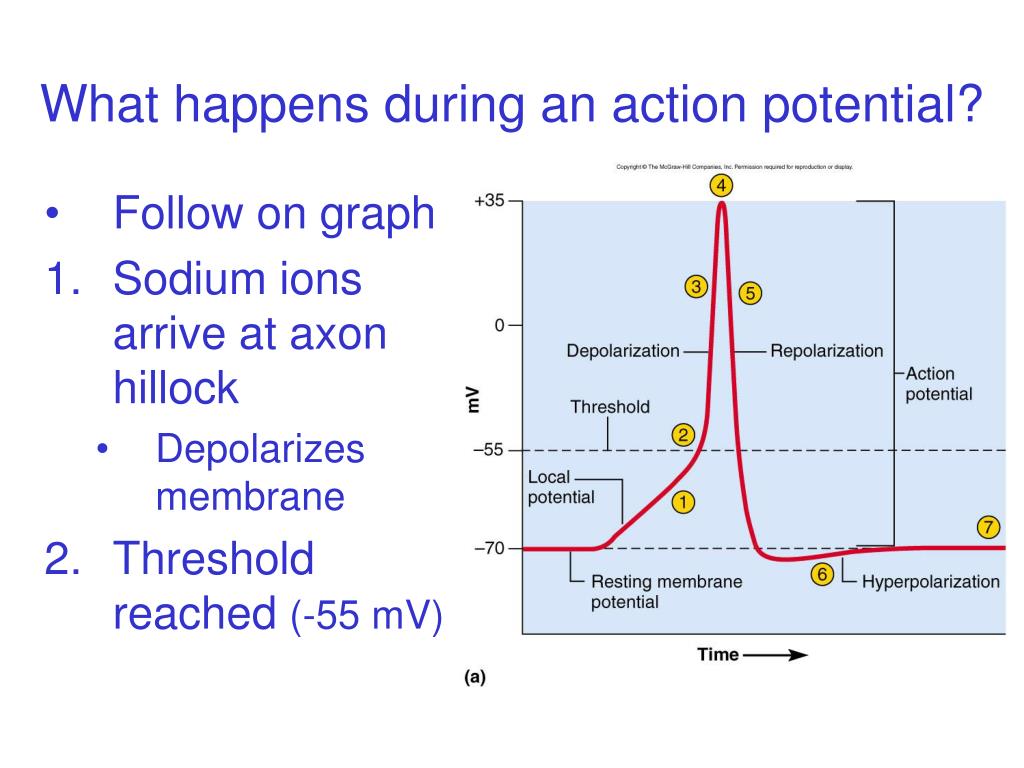


Graded Potential: Graded potential may have variable signal strengths which are less than an action potential.Īction Potential:Action potential is a large depolarization, which reaches the threshold (+40 mV). Graded Potential:Graded potential can occur either due to depolarization or hyperpolarization.Īction Potential: Action potential can only occur due to depolarization. Graded Potential:Graded potential refers to a membrane potential, which can vary in amplitude.Īction Potential:Action potential refers to a change in the electrical potential, which is associated with the transmission of impulses along the membrane of a nerve cell or muscle cell. Both graded potential and action potential are generated as a result of transmission of signals.ĭifference Between Graded Potential and Action Potential Definition.Both graded potential and action potential are two types of membrane depolarizations of the nerve cells.Similarities Between Graded Potential and Action Potential In the resting potential, the concentration of the sodium ions is high outside of the nerve cell while the concentration of the potassium ions is high inside the nerve cell. During the refectory period, sodium-potassium channels are opened to restore the resting potential. Refectory period refers to the time period between two action potentials.

The influx of potassium ions into the outside of the nerve cell causes the reduction of the positive charge inside the cell. This is caused by the opening of the potassium channels. The restoration of the negative charge inside the nerve cell is known as the repolarization. Examples of graded potentials are shown in figure 1. The strength of the signal decays with the distance. The generation of graded potentials occurs by the opening of ligand-gated ion channels. The transmission of graded potential can occur uniformly in all directions. Several graded potentials can be integrated either temporally or spatially. Graded potentials can be either depolarizing or hyperpolarizing. The amplitude is proportional to the size of the input stimuli. Graded potential refers to a membrane potential that can vary in amplitude. Key Terms: Action Potential, Depolarization, Graded Potential, Nerve Cell, Resting Membrane Potential What is the Difference Between Graded Potential and Action Potential What are the Similarities Between Graded Potential and Action PotentialĤ. Graded potential may lose the strength as they are transmitted through the neuron but, action potentials do not lose their strength during the transmission. The main difference between graded potential and action potential is that graded potentials are the variable-strength signals that can be transmitted over short distances whereas action potentials are large depolarizations that can be transmitted over long distances. Graded potential and action potential are the two types of potential differences that can be generated during depolarization. The loss of resting membrane potentials is known as the depolarization. The signals of the nervous system are transmitted through the nerve cells in the form of potential differences. The interior of the plasma membrane is negatively charged while the exterior is positively charged. The plasma membrane of the nerve cells is usually at the resting membrane potential. Main Difference – Graded Potential vs Action Potential


 0 kommentar(er)
0 kommentar(er)
